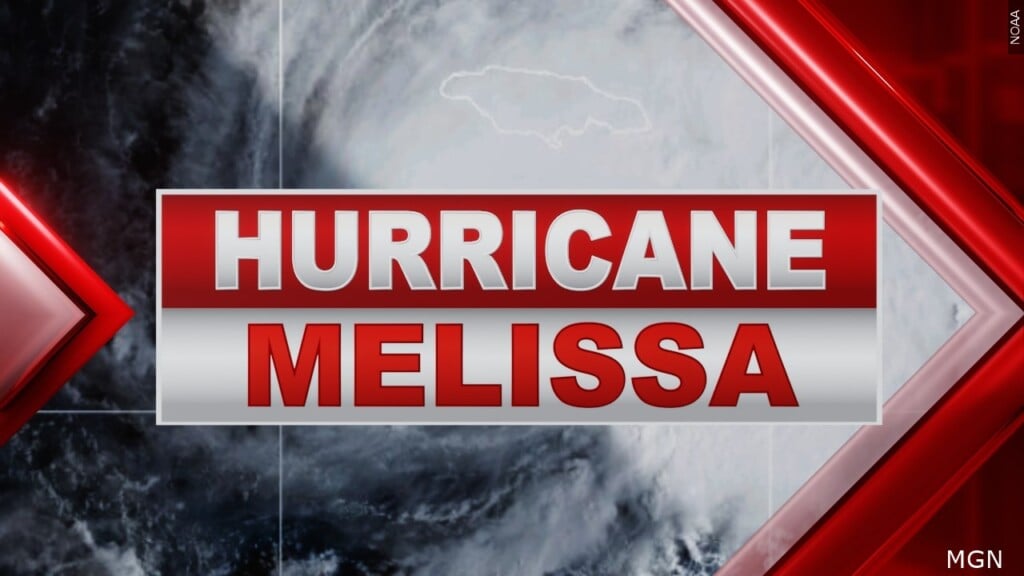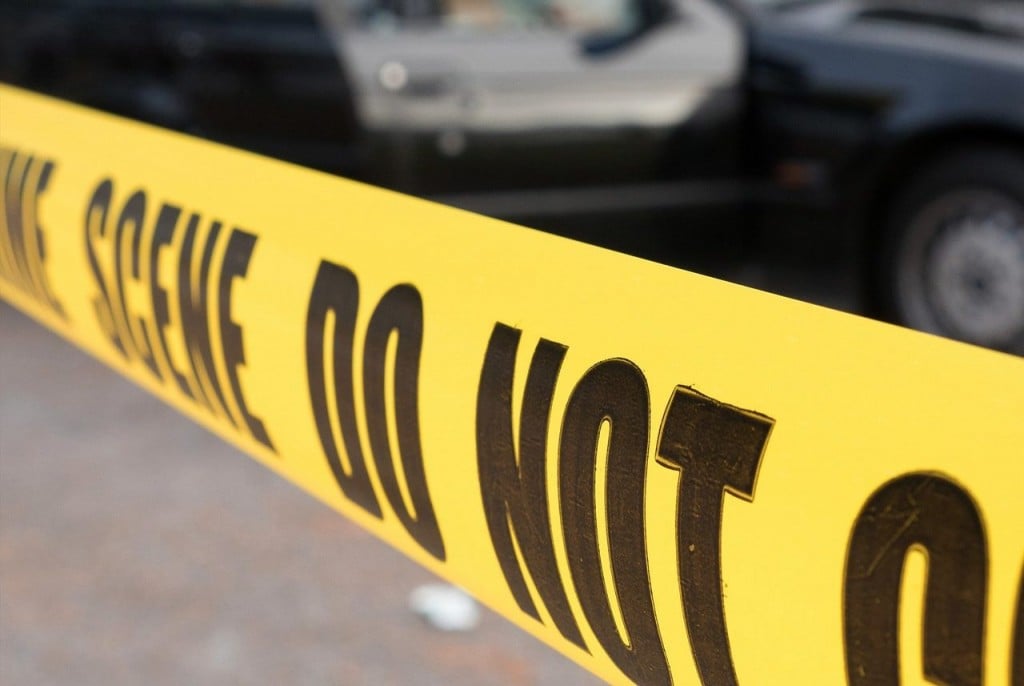Hurricane Melissa makes landfall in Jamaica as devastating Category 5 storm

KINGSTON, Jamaica (AP) — Hurricane Melissa intensified Tuesday before making landfall in Jamaica, where officials and residents braced for catastrophic winds, flash flooding and landslides from the Category 5 storm, one of the strongest Atlantic hurricanes in history.
The streets in the capital, Kingston, remained largely empty as Melissa approached with 185 mph (295 kph) winds, save for the lone stray dog crossing puddles and a handful of people walking briskly under tree branches waving in a stiff wind.
Desmond McKenzie, deputy chairman of Jamaica’s Disaster Risk Management Council, urged people to seek shelter and stay indoors as the storm crosses the island.
“Jamaica, this is not the time to be brave,” he said.
The Jamaican government said it had done all it could to prepare as it warned of devastating damage from the strongest hurricane to hit the island since recordkeeping began 174 years ago.
“There is no infrastructure in the region that can withstand a Category 5,” Prime Minister Andrew Holness said. “The question now is the speed of recovery. That’s the challenge.”
Massive wind damage is expected in Melissa’s core and Jamaica’s highest mountains could see gusts of up to 200 mph (322 kph), said Michael Brennan, director of the U.S. National Hurricane Center in Miami.
“It’s going to be a very dangerous scenario,” he said, warning that there would be “total building failures.”
Melissa is the fifth most intense Atlantic basin hurricane on record by pressure and the strongest to make landfall since Hurricane Dorian in 2019, according to hurricane specialist and storm surge expert Michael Lowry.
It is “a worst-case scenario unfolding for Jamaica,” he said.
Jamaica prepares for the aftermath
Landslides, fallen trees and numerous power outages were reported as Melissa approached, with officials in Jamaica cautioning that the cleanup and damage assessment could be slow. The storm is expected slice diagonally across the island and head for Cuba.
On Tuesday morning, Melissa was centered about 25 miles (40 kilometers) southeast of Negril, Jamaica, and about 145 miles (235 kilometers) southwest of Guantánamo, Cuba. The system had maximum sustained winds of 185 mph (295 kph) and was moving north-northeast at 9 mph (15 kph), according to the National Hurricane Center.
A life-threatening storm surge of up to 13 feet (4 meters) is expected across southern Jamaica, with officials concerned about the impact on some hospitals along the coastline. Health Minister Christopher Tufton said some patients were relocated from the ground floor to the second floor, “and (we) hope that will suffice for any surge that will take place.”
One man called a local radio station and said he urgently needed to help a woman in western Jamaica who had gone into labor as the storm prepared to make landfall. The show’s host pleaded with listeners to let the man know the safest hospital for the woman. An obstetrician called in and provided detailed directions on how to deliver a baby, if necessary.
Colin Bogle, a Mercy Corps adviser based near Kingston, said most families are sheltering in place despite the government ordering evacuations in flood-prone communities.
“Many have never experienced anything like this before, and the uncertainty is frightening,” he said. “There is profound fear of losing homes and livelihoods, of injury, and of displacement.”
McKenzie said the government was prepared for rescues immediately after the storm: “We have boats, helicopters, you name it.”
The storm already was blamed for seven deaths in the Caribbean, including three in Jamaica, three in Haiti and one in the Dominican Republic, where another person remains missing.
Necephor Mghendi, the International Red Cross’ regional head of delegation for the English- and Dutch-speaking Caribbean, said an estimated 1.5 million people in the storm’s path will be affected but “the entire population may feel the impact one way or the other.”
More than 240,000 customers were without power before landfall and about one-fourth of the telecommunications system was offline, said Darryl Vaz, transport and energy minister. He said crews will clean and run tests at the island’s two main international airports Wednesday in hopes of receiving emergency relief flights as early as Thursday.
U.N. agencies and dozens of nonprofits had food, medicine and other essential supplies positioned as they awaited a distribution rush after the storm.
Matthew Samuda, Jamaica’s water and environment minister, said he had more than 50 generators available to deploy after the storm, but warned people to set aside clean water and use it sparingly.
“Every drop will count,” he said.
Melissa takes aim at Cuba
Melissa was expected to make landfall in eastern Cuba late Tuesday or early Wednesday. Up to 20 inches (51 centimeters) of rain were forecast in areas, along with a significant storm surge along the coast.
Authorities in eastern Holguín province prepared to evacuate more than 200,000 people Tuesday and evacuated a similar number of people earlier from the town of Banes.
Reports on social media and state television showed blue and white buses ferrying evacuees to shelter early Tuesday. Families clutched babies and belongings and elderly people steadied themselves with canes as they disembarked.
“This phenomenon is very dangerous,” Deputy Prime Minister Eduardo Martínez said in a statement from Banes, where he was located in what appeared to be a shelter. “It is unprecedented.”
Melissa also has drenched the southern regions of Haiti and the Dominican Republic, with a tropical storm warning still in effect for Haiti. The hurricane was forecast to turn northeast and strike the southeast Bahamas by Wednesday evening.
Previous story:
Hurricane Melissa intensified into a Category 5 storm Monday as it drew closer to Jamaica, where forecasters expected it to unleash catastrophic flooding, landslides and widespread damage. At that strength, it would be the strongest hurricane to hit the island since record-keeping began in 1851.
Blamed for seven deaths in the northern Caribbean as it headed toward the island, Melissa was on track to make landfall Tuesday in Jamaica before coming ashore in Cuba later in the day and then heading toward the Bahamas. It was not expected to affect the United States.
Anticipating the hardship in store for his country, Jamaican Prime Minister Andrew Holness said, “I have been on my knees in prayer.”
Hanna Mcleod, a 23-year-old hotel receptionist in the Jamaican capital of Kingston, said she boarded up the windows at her home, where her husband and brother are staying. She stocked up on canned corned beef and mackerel and left candles and flashlights throughout the house.
“I just told them to keep the door closed,” she said. “I am definitely worried. This is actually the first time I’ll be experiencing this type of hurricane.”
Category 5 is the top of the Saffir-Simpson hurricane scale, with sustained winds exceeding 157 mph (250 kph). Melissa would be the strongest hurricane in recorded history to hit the small Caribbean nation directly, said Jonathan Porter, chief meteorologist at AccuWeather.
A storm surge of up to 13 feet (4 meters) was expected along coastal Kingston, which Porter said is home to critical infrastructure such as Jamaica’s main international airport and power plants.
“This can become a true humanitarian crisis very quickly, and there is likely going to be the need for a lot of international support,” Porter said in a phone interview.
System has winds of 175 mph
On Monday night, Melissa was centered about 155 miles (245 kilometers) southwest of Kingston and about 335 miles (535 kilometers) southwest of Guantánamo, Cuba. The system had maximum sustained winds of 175 mph (280 kph) and was moving northwest at 2 mph (4 kph), according to the U.S. National Hurricane Center in Miami.
Parts of eastern Jamaica could see up to 30 inches (76 centimeters) of rain while western Haiti could get 16 inches (40 centimeters), the hurricane center said, citing the likelihood of “catastrophic flash flooding and numerous landslides.”
Mandatory evacuations were ordered in flood-prone communities in Jamaica, with buses ferrying people to safe shelter.
But some insisted on staying.
“I hear what they say, but I am not leaving,” said Noel Francis, a 64-year-old fisherman who lives on the beach in the southern town of Old Harbor Bay, where he was born and grew up. “I can manage myself.”
His neighbor, Bruce Dawkins, said he also had no plans to leave his home.
“I am not going anywhere,” Dawkins said, wearing a raincoat and holding a beer. The fisherman said he had already secured his vessel and planned to ride out the storm with his friend.
Several towns along Jamaica’s southern coast already reported power outages as winds picked up throughout the night.
“My only concern is flooding, because we live near the sea,” said Hyacinth White, 49, who said she had no plans to evacuate to a shelter.
Officials said the biggest storm surge was expected in the Black River community in western Jamaica, where Sandra Walker was the sole street vendor working just hours ahead of the hurricane.
“I have no choice but to be here,” she said as she sorted potatoes, green bananas, tomatoes and scallion stalks in her stall.
Walker, a single mother of two, is still struggling to recover after Hurricane Beryl destroyed her business and home last year. She lives by the ocean but does not plan to go to a shelter because she had a “terrible” shelter experience during Hurricane Ivan, when the facility offered only a handful of tins of corned beef to share.
Jamaican government officials said they were worried that fewer than 1,000 people were in the more than 130 shelters open across the island.
“It’s way, way below what is required for a Category 5 hurricane,” said Daryl Vaz, Jamaica’s transport minister, who urged people “to be smart … If you are not, unfortunately, you will pay the consequences.”
Storm could be most powerful to hit Jamaica in 174 years
The slow-moving storm has killed at least three people in Haiti and a fourth person in the Dominican Republic, where another person remains missing. Two people died in Jamaica over the weekend as they cut trees ahead of the storm, and a third one died after being electrocuted.
“It’s nothing to play with,” said Water and Environment Minister Matthew Samuda. “The time for preparation is all but over.”
More than 50,000 customers were without power. Landslides, fallen trees and downed power lines were reported ahead of the storm.
In eastern Cuba, a hurricane warning was in effect for the Granma, Santiago de Cuba, Guantánamo and Holguin provinces, while a tropical storm warning was in effect for Las Tunas. Up to 20 inches (51 centimeters) of rain was forecast for parts of Cuba, along with a significant storm surge along the coast.
Cuban officials said they would evacuate more than 600,000 people from the region, including Santiago, the island’s second-largest city. Long bus lines formed in some areas.
Later, Melissa was forecast to barrel through the southeastern and central Bahamas, which were under a hurricane warning. A tropical storm warning was issued for the Turks and Caicos Islands.
Evan Thompson, principal director at Jamaica’s meteorological service, warned that cleanup and damage assessment would be severely delayed because of anticipated landslides, flooding and blocked roads.
A storm of Category 4 or higher has not made landfall in Jamaica in 174 years of record-keeping. Hurricane Gilbert was a Category 3 storm when it hit the island in 1988. Hurricanes Ivan and Beryl were both Category 4, but they did not make landfall, Thompson said.
Drenching rain in the Dominican Republic and Haiti
The storm already has drenched the Dominican Republic, where schools and government offices were ordered to remain closed on Monday in four of nine provinces still under the most serious form of weather alert.
Melissa damaged more than 750 homes across the country and displaced more than 3,760 people. Floodwaters also have cut access to at least 48 communities, officials said.
In neighboring Haiti, the storm destroyed crops in three regions, including 15 hectares (37 acres) of maize at a time when at least 5.7 million people, more than half of the country’s population, are experiencing crisis levels of hunger.
Melissa is the 13th named storm of the Atlantic hurricane season, which runs from June 1 to Nov. 30.



